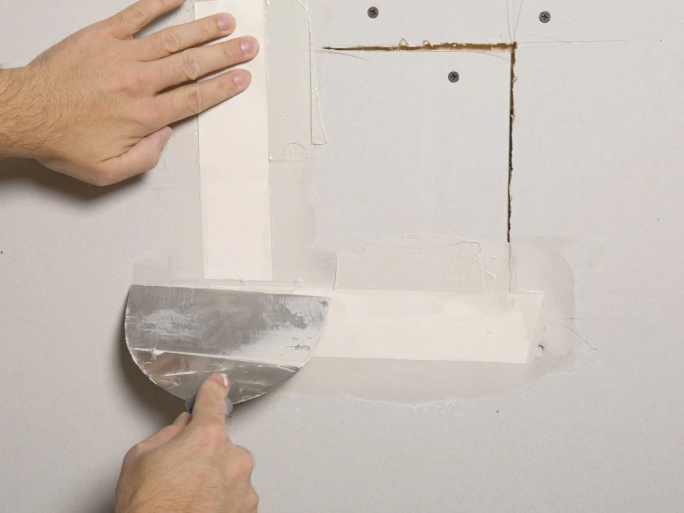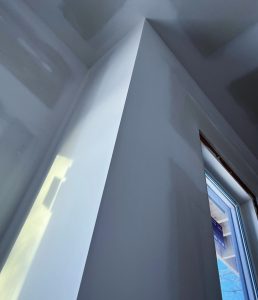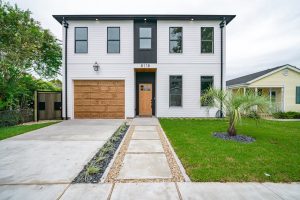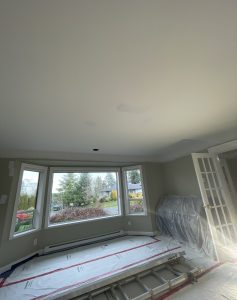Drywall, also known as gypsum board or plasterboard, is a ubiquitous building material used to create interior walls and ceilings in residential and commercial structures. While durable, drywall is not indestructible and can be susceptible to damage from various sources, including impacts, moisture, and general wear and tear. Repairing damaged drywall is a common home maintenance task that requires careful attention to detail and the use of proper techniques and materials. In this comprehensive guide, we will explore the specific challenges and considerations associated with repairing drywall in different areas of the home.
1. Ceilings
Repairing drywall on ceilings presents unique challenges due to the overhead work involved and the effects of gravity on joint compound and patching materials. Here are some tips for successfully repairing ceiling drywall:
- Use sturdy ladders or scaffolding: Working overhead requires stable support to ensure safety and precision. Choose a ladder or scaffolding system that provides secure footing and allows you to comfortably reach the damaged area.
- Use lightweight joint compound: When repairing ceiling drywall, consider using lightweight joint compound, which is easier to work with and less likely to sag or drip during application. Lightweight joint compound also dries more quickly, reducing the overall repair time.
- Ensure proper support for large patches: For larger patches or repairs on ceilings, it’s essential to provide adequate support to prevent sagging or failure. Consider installing temporary braces or using supporting materials such as drywall clips or backer boards to reinforce the repair area.
2. Corners
Drywall corners are vulnerable areas that are prone to damage from impacts and general wear and tear. Repairing drywall corners requires careful attention to detail to ensure a seamless finish. Here are some techniques for successfully repairing drywall corners:
- Use metal or plastic corner bead: Corners can benefit from added reinforcement to protect the edges from damage. Metal or plastic corner bead provides a durable and straight edge for finishing and helps prevent future dents or dings.
- Feather joint compound evenly: When patching damaged corners, apply joint compound in thin layers, feathering the edges gradually to blend the repair with the surrounding wall. Use a wide drywall knife or corner trowel to achieve a smooth and seamless finish.
- Use corner trowels or knives: Specialty tools such as corner trowels or knives can help achieve precise application and smooth transitions in tight corners. These tools allow for greater control and accuracy when feathering joint compound and finishing the repair.
3. Around Door Frames and Windows
Drywall around door frames and windows is susceptible to damage from frequent use and potential moisture intrusion. Repairing drywall in these areas requires attention to detail and proper preparation to ensure a professional-looking finish. Here are some tips for successfully repairing drywall around door frames and windows:
- Carefully cut away damaged sections: When repairing drywall around door frames and windows, take care to cut away damaged sections without disturbing the surrounding structure. Use a utility knife or drywall saw to create clean edges and remove any loose or damaged material.
- Use drywall shims or backing: To support patches around door frames and windows, consider using drywall shims or backing material to provide additional stability and prevent sagging. Insert shims or backing behind the patch to create a solid foundation for the repair.
- Caulk or seal edges: After making the repair, seal the edges around door frames and windows with caulk or sealant to prevent moisture intrusion and ensure a tight seal. Choose a paintable caulk that matches the surrounding surface for a seamless finish.
4. Basements and Moisture-Prone Areas
Basements and other moisture-prone areas pose unique challenges for drywall repair due to the risk of mold and mildew growth. When repairing drywall in these areas, it’s essential to address underlying moisture issues and use appropriate materials and techniques to prevent future damage. Here are some strategies for successfully repairing drywall in basements and moisture-prone areas:
- Use moisture-resistant drywall: Consider using moisture-resistant drywall, also known as green board or blue board, in basements and other areas prone to moisture. Moisture-resistant drywall is specially formulated to withstand high humidity and moisture levels, reducing the risk of mold and mildew growth.
- Address underlying moisture issues: Before making repairs, identify and address any underlying moisture issues, such as leaks or condensation. Repair damaged plumbing, improve drainage, and use dehumidifiers or ventilation fans to reduce humidity levels in the space.
- Apply waterproof sealants or coatings: After making the repair, apply waterproof sealants or coatings to the repaired surface to provide an additional layer of protection against moisture intrusion. Choose a waterproof sealant specifically designed for use on drywall and follow the manufacturer’s instructions for application.
5. Exterior Walls and Insulation
Repairing drywall on exterior walls requires additional considerations for insulation and weatherproofing. When repairing drywall on exterior walls, it’s essential to ensure proper insulation and protection against the elements. Here are some tips for successfully repairing drywall on exterior walls:
- Ensure proper insulation and vapor barrier installation: Before making repairs, ensure that the exterior walls are properly insulated and equipped with a vapor barrier to prevent moisture infiltration. Inspect existing insulation for damage or deterioration and replace as needed.
- Use exterior-grade materials: When making repairs on exterior walls, use exterior-grade drywall and joint compound to withstand exposure to the elements. Exterior-grade materials are designed to resist moisture, temperature fluctuations, and UV exposure, ensuring long-lasting durability.
- Seal gaps or cracks: After making the repair, seal any gaps or cracks around the repaired area to prevent air leakage and energy loss. Use a quality caulking or sealant to create a tight seal and protect against drafts and moisture infiltration.
6. Utility Rooms and Garage
Drywall in utility rooms and garages is often subject to rough treatment and exposure to chemicals or heavy equipment. Repairing drywall in these areas requires durable materials and techniques to withstand harsh conditions. Here are some strategies for successfully repairing drywall in utility rooms and garages:
- Use impact-resistant drywall: Consider using impact-resistant drywall, also known as Type X drywall, in utility rooms and garages where durability is essential. Impact-resistant drywall is specially formulated to withstand impacts and is more resistant to dents, dings, and punctures than standard drywall.
- Add protective coverings: To prevent future damage, consider adding protective coverings such as pegboards, panels, or metal sheets to high-traffic areas or areas exposed to heavy equipment. Protective coverings provide an additional layer of protection against impacts and abrasions, extending the life of the drywall.
- Choose durable joint compounds and adhesives: When making repairs in utility rooms and garages, choose durable joint compounds and adhesives designed for use in high-moisture or high-impact environments. Look for products labeled as suitable for exterior or heavy-duty applications to ensure long-lasting performance.
By following these tips and techniques, homeowners can successfully repair drywall in different areas of the home, from ceilings and corners to basements and utility rooms. Whether tackling minor repairs or extensive renovations, proper preparation, attention to detail, and the use of quality materials are key to achieving professional-looking results and maintaining the structural integrity of the home.






